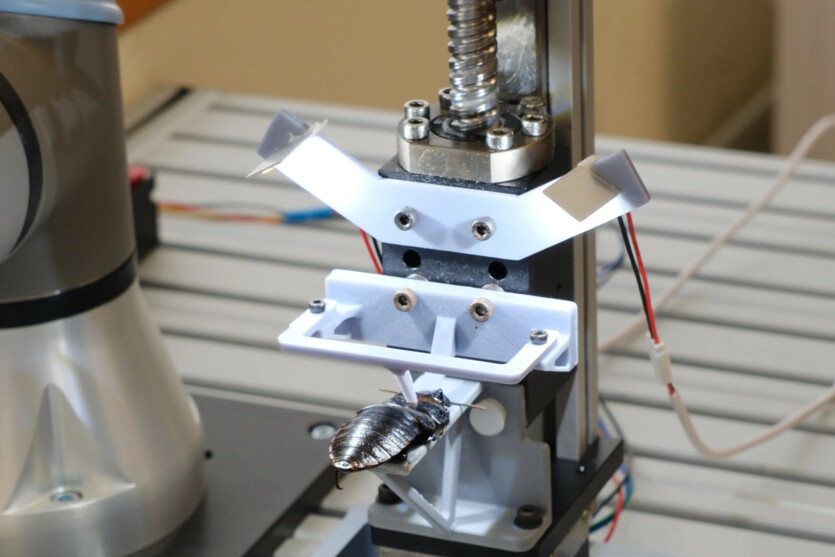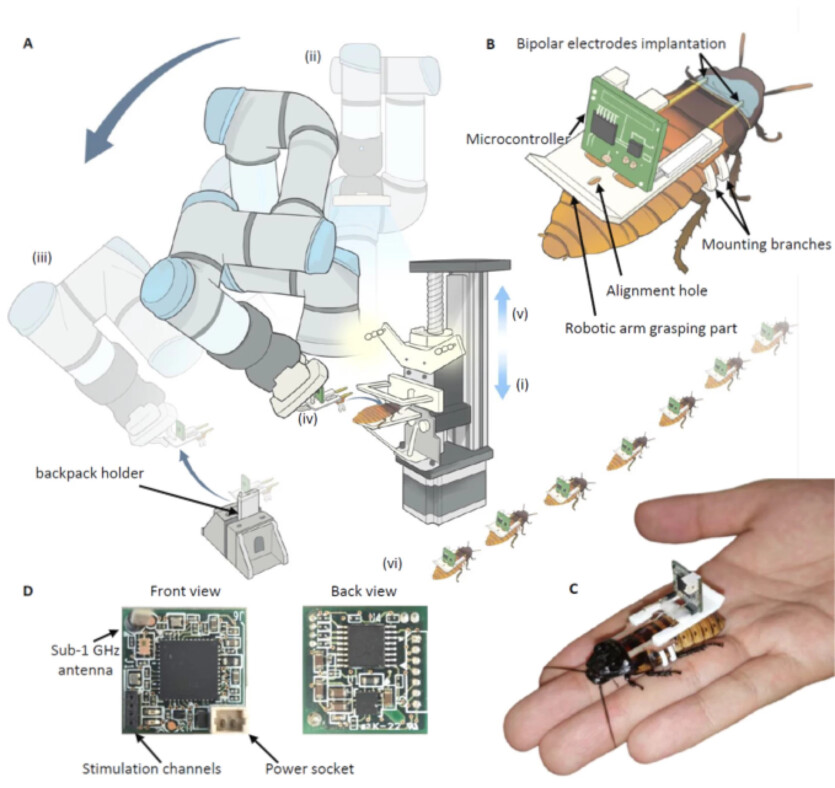
Researchers from Japan and Singapore have created a conveyor for quick chipping of cockroaches and their subsequent remote control.
The technology was developed by Professor Hirotaka Sato and his colleagues from the Nanyang Technological University in Singapore. According to the developers, their cockroach chipping technology can be a promising analog to the creation of tiny artificial robots.
Mostly, scientists used large Madagascar cockroaches with a tiny backpack with electrodes, attached to their backs. With the help of these electrodes, the researchers remotely controlled the insects’ movements, as well as their whiskers and eyes. It is expected, that such cyborg cockroaches can be used in search missions to rescue people from the rubble of buildings.
The cockroach, equipped with a remote-controlled camera, will be able to squeeze through impenetrable gaps in the rubble, transmitting real-time images and coordinates of all survivors it encounters. However, a few cockroaches will not be enough to realize this ambitious plan.
It is assumed, that large groups of insects will be dispersed across the rubble, possibly even coordinating search routes via wireless communication. In order to realize this, an automated process for chipping cockroaches needs to be developed.
Professor’s system Sato’s Hirotaki is computer-controlled and includes a platform to hold the insect in place, an Intel RealSense camera with depth sensor, and a UR3e robotic arm with with the Hand-E robotic gripper. After fixing the cockroach, which was previously received an injection painkiller, on a platform, a computer vision system estimates the size and position of the insect’s body. Then, one section of the cockroach’s outer cuticle is pulled back, exposing the membrane between the pronotum and mid-thorax.

After that, the cockroach is “put on” a 2.3 g backpack with two bipolar electrodes in the front, which are attached to to the left and right sides of the open membrane. The main backpack is gently pressed against the cockroach’s mesothorax until it clicks. In the last step, the platform is pulled back and the insect, still under anesthesia, is released.
The process of chipping one cockroach takes 68 seconds. If you do the same thing manually, it can take from 15 minutes to one hour. According to the results of tests, conducted on assembly-line and hand-assembled cyborg cockroaches, both groups showed similar results in remote-controlled tasks, such as following an S-shaped trajectory and exploring obstacle courses. In addition, the equipment attached to the cockroaches can be removed after the mission is completed.
“Our innovation makes the dream of using a large number of cyborg insects in real life much more realistic. By automating the process, we can produce hybrid insect robots quickly and consistently. This will allow us to produce them in large quantities, which will be critical for urgent operations such as search and rescue after natural disasters”, — says Professor Hirotaka Sato.
The results of the study are published in the journal Nature Communications
Source: New Atlas

Spelling error report
The following text will be sent to our editors: